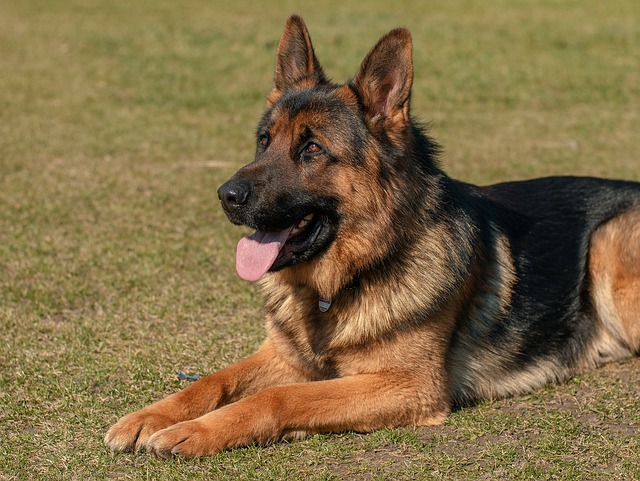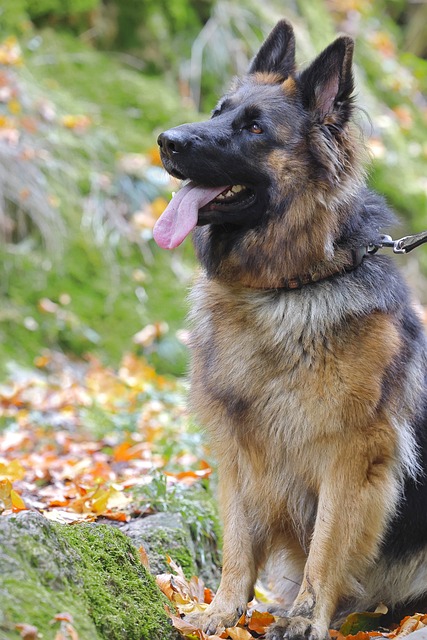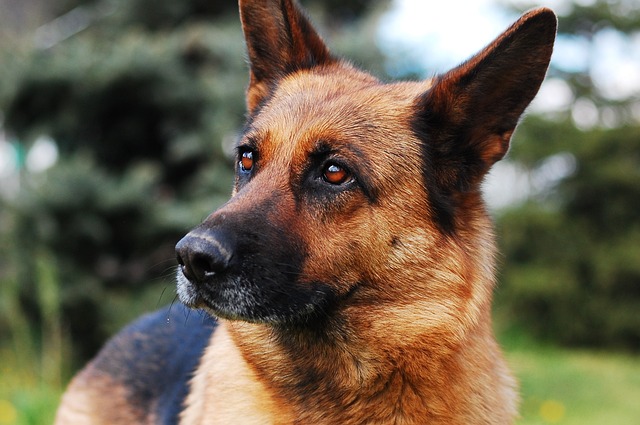The German Shepherd, also known as the Alsatian in some regions, is a highly versatile and intelligent breed of dog that originated in Germany. It is widely recognized for its loyalty, adaptability, and working capabilities, making it one of the most popular and beloved breeds worldwide. Here is a detailed overview of this remarkable breed:

Physical Characteristics
German Shepherds are medium to large-sized dogs with a well-balanced, muscular build that exudes strength and agility.
- Size: Adult males typically stand between 60-65 cm (24-26 inches) at the shoulder and weigh 30-40 kg (66-88 lbs). Females are slightly smaller, standing 55-60 cm (22-24 inches) tall and weighing 22-32 kg (49-71 lbs).
- Coat: The breed has a double coat, consisting of a dense outer layer and a soft undercoat. The most common colors are black and tan, though other color variations include black, sable, and bi-color.
- Head: German Shepherds have a strong, wedge-shaped head with erect ears, almond-shaped dark eyes, and a confident expression.
- Tail: Their tail is bushy and hangs low, curving slightly upward when the dog is excited or active.
Temperament and Personality
German Shepherds are renowned for their intelligence, loyalty, and protective instincts. These qualities make them excellent working dogs, family pets, and companions.
- Intelligence: Ranked among the most intelligent dog breeds, German Shepherds excel in learning commands and tasks, often requiring fewer repetitions during training.
- Loyalty: They form strong bonds with their owners and families, displaying unwavering loyalty.
- Protectiveness: As natural guardians, German Shepherds are vigilant and alert, making them exceptional watchdogs.
- Energy: These dogs are highly energetic and thrive in environments where they can engage in regular physical and mental stimulation.
History and Origin
The German Shepherd breed was developed in the late 19th century by Captain Max von Stephanitz, who aimed to create the ideal working dog. He focused on breeding dogs with intelligence, endurance, and herding abilities. The breed gained recognition for its versatility, transitioning from herding sheep to serving in roles such as police work, search and rescue, and military operations.
The first German Shepherd registered was “Horand von Grafrath,” considered the foundation of the modern breed. The breed’s popularity spread rapidly, particularly after World War I, where its abilities were showcased in various working roles.
Uses and Roles
German Shepherds are highly versatile and excel in a wide range of activities and jobs, including:
- Police and Military Work: Their keen sense of smell, strength, and trainability make them ideal for detecting explosives, drugs, and tracking criminals.
- Service Dogs: They assist individuals with disabilities, including guiding the visually impaired and providing support to those with mobility challenges.
- Search and Rescue: Their excellent tracking skills and determination make them invaluable in finding missing persons.
- Herding: While less common today, German Shepherds retain their original role as skilled herding dogs.
- Companionship: They are loyal and loving family pets, known for their protective nature around children.
Training and Exercise
German Shepherds require consistent training and regular exercise to remain happy and healthy.
- Training: They respond exceptionally well to positive reinforcement techniques. Early socialization and obedience training are crucial to ensuring they grow into well-rounded adults.
- Exercise: As an active breed, they need at least 1-2 hours of physical activity daily, including walks, playtime, and activities like agility or obedience training.
- Mental Stimulation: Puzzle toys, advanced training exercises, and interactive play are essential to keep their minds sharp.
Health and Lifespan
German Shepherds are generally healthy dogs, but like all breeds, they are prone to specific health issues.
- Common Health Concerns:
- Hip and elbow dysplasia
- Degenerative myelopathy
- Bloat (gastric torsion)
- Lifespan: On average, they live 9-13 years, depending on genetics, diet, and care.
Regular veterinary check-ups, a balanced diet, and appropriate exercise can help minimize health risks and ensure a long, healthy life.
Care Requirements
- Diet: High-quality dog food, appropriate for their size and energy level, is essential. Their diet should include proteins, healthy fats, and essential nutrients.
- Grooming: Regular brushing is necessary to manage shedding, particularly during seasonal changes. Baths should be given as needed, and their nails, ears, and teeth require routine care.
- Environment: German Shepherds adapt well to different living conditions but thrive in homes with enough space to move around. A securely fenced yard is ideal.
Fun Facts
- German Shepherds are the second most popular dog breed in the United States, according to the American Kennel Club.
- The breed starred in early Hollywood films, such as “Rin Tin Tin,” showcasing its trainability and charm.
- Their sense of smell is incredibly powerful, making them exceptional trackers.

The German Shepherd is a remarkable breed, known for its intelligence, versatility, and devotion. Whether as a working dog or a loyal family companion, it continues to leave an enduring legacy as one of the world’s most capable and beloved breeds.

